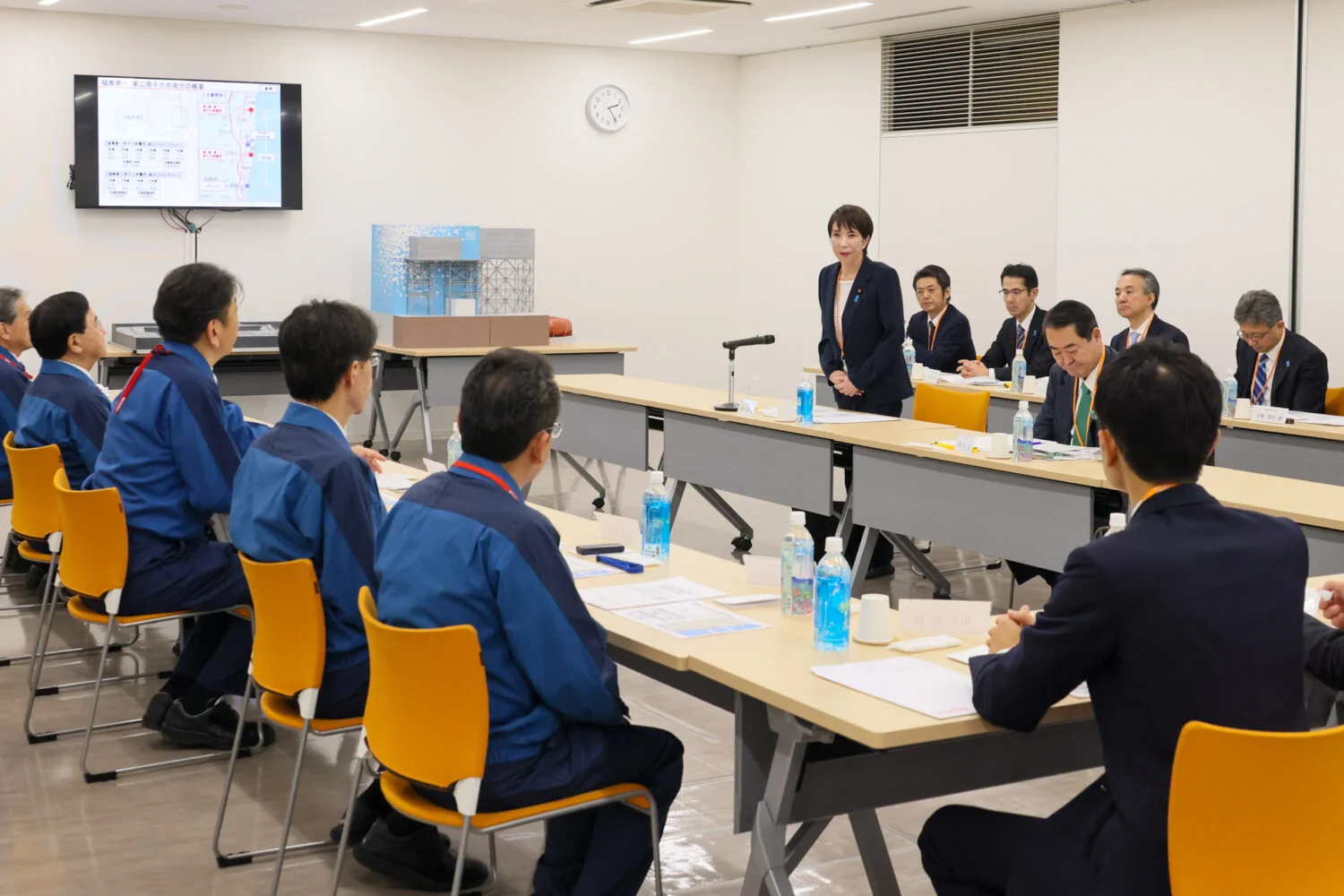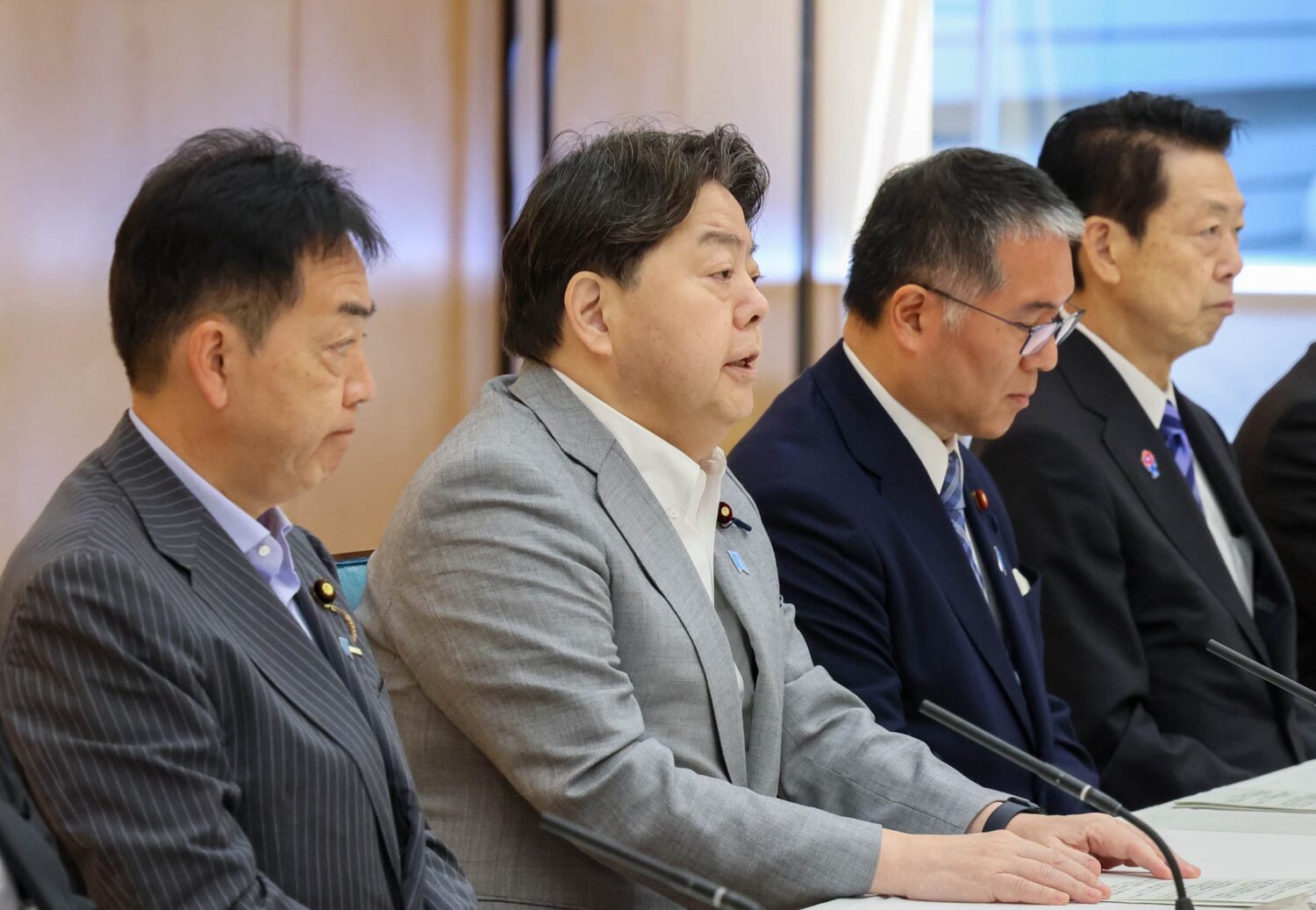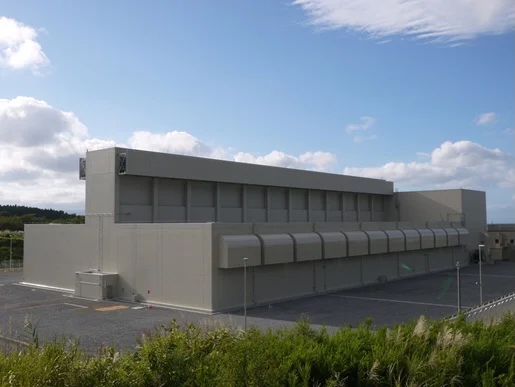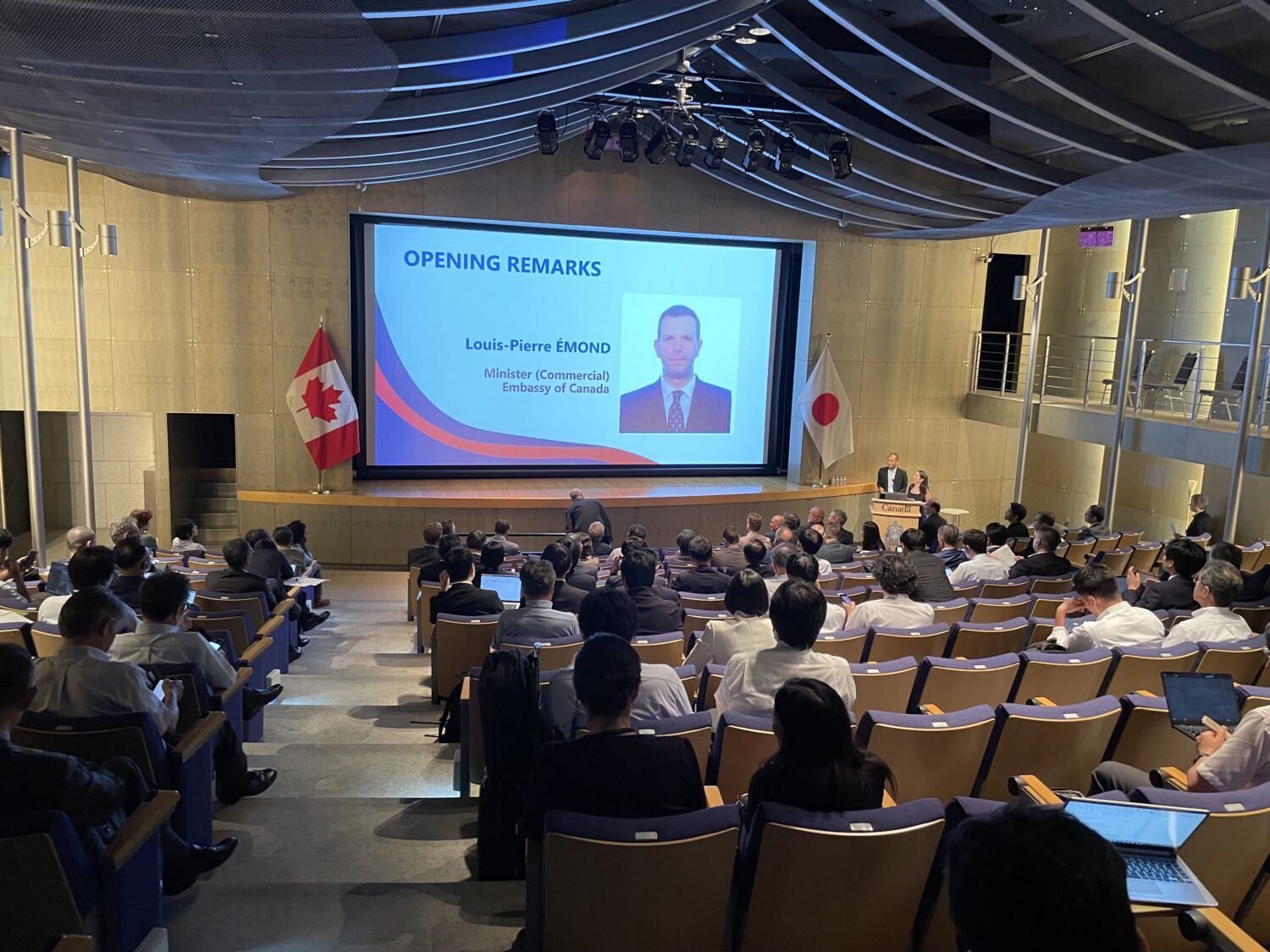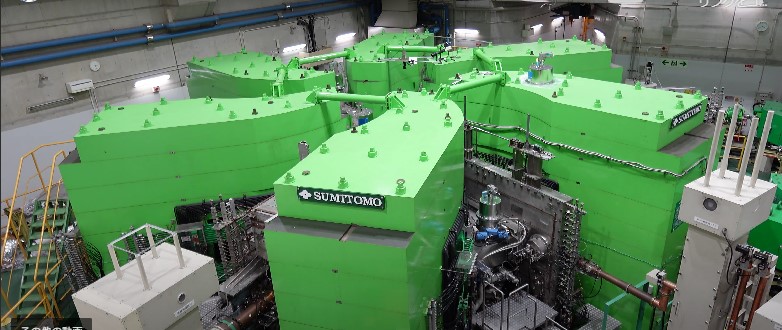Current status of Fukushima Daiichi and related issues
Speaking on the status of the Fukushima Daiichi NPPs and related issues, TEPCO’s Masuda talked about Units 1-4, along with progress in treatment of contaminated groundwater, and the removal of spent fuel and fuel debris. He also explained about cooperation with local communities toward the restoration and reconstruction of Fukushima, and the dissemination of information.
Saying that the working environment had become one in which individuals can work steadily, without fear of injury, Masuda attributed the improvements to the attitudes and efforts of those working there every day, and expressed his gratitude to them. He then showed an eight-minute video of efforts toward decommissioning, while looking back at the time when the reactor accidents occurred. Units 1-4 have been maintained in a cold shutdown state, with treatment of contaminated water progressing. With radiation levels now lower, workers wear surgical masks rather than full-face ones, allowing them to move freely in ordinary work clothing in ninety-five percent of the area.

As for removal of the remaining spent fuel, Masuda said it would be done at the other three units based on what had been learned earlier during the removal of all fuel from Unit 4 in December 2014. He said that he expected fuel removal to begin at Unit 3 in the fall. Toward the removal of the fuel debris, the company has conducted a series of investigations of the interiors of the reactor containment vessels to figure out the conditions at each. Radioactive concentrations in the water, have been found to have fallen to levels of 1/100,000th to 1/1,000,000th of those immediately after the accident, and Masuda expressed his hope that that would remain so. As of the end of February 2018, there were 4,970 workers per day—comprising both TEPCO’s and those of cooperating companies—sixty percent of whom were locally hired. The exposure dose was 0.32 millisieverts per month as of January 2018.
Accumulated water measures have been carried out according to three basic principles: removing the sources of contamination, isolating groundwater from contamination sources, and preventing leakage of contaminated water. The volume of contaminated water caused by rainwater and groundwater averaged 490 cubic meters per day before the landside shielding walls were closed. Closure reduced it to 110 cubic meters per day, less than one-fourth of the original level. The volume of generated contaminated water, including water transferred to the building in association with decommissioning work, was reduced to 140 cubic meters per day, less than 150 cubic meters per day, which had been the target for 2020.
Speaking about the activities toward Fukushima Daiichi’s decommissioning, Masuda said that it was important for them to be understood, and that the company must convey the kind of information that people want to receive. In 2017, there were 12,489 visitors to Fukushima Daiichi, fifty-eight percent of whom came from outside the prefecture and twenty-six percent from the prefecture. TEPCO intends to increase the number to 20,000 annually prior to the 2020 Tokyo Olympics.
As part of its activities toward Fukushima’s reconstruction, an action plan was issued to deal with unfounded fears and rumors. As the party responsible for the accident, TEPCO wants to promote the purchasing of Fukushima products even more than now. Masuda concluded his presentation by saying, “We will gather the world’s wisdom and carry out decommissioning together with all of you.”
The Fukushima Innovation Coast Vision
Next, under the theme “The Fukushima Innovation Coast Vision and Regional Revitalization: Creation of New Value,” Fukushima University Professor Yoshihito Ozawa explained the so-called “Fukushima Innovation Coast” plan for building a new industrial base in the region.
The giant earthquake of March 11, 2011, along with the subsequent accident at the Fukushima Daiichi NPPs, were major disasters for an area of Japan already suffering more than most from a declining population and aging society. They substantially affected the primary economic sector on which people’s lives were based, because radioactive contamination over a large area required long-term evacuation. Referring to that background, Ozawa emphasized that fifty thousand of the total of 1.85 million people in Fukushima are still evacuees, with the remainder working hard to carry out the reconstruction of the prefecture.

Immediately after the disaster, Fukushima University formed a team to measure radiation, and members of the team visited areas around the prefecture using taxis and other means to gather data. So accurate was the data that they were provided to the local government. Three years ago, the university established the Institute of Environmental Radioactivity (IER) to study and distinguish naturally-occurring environmental radiation from that caused by the 2011 accident. It has also studied movements of radioactivity via water and the effects on ecology. Notwithstanding those efforts, unfounded fears and rumors continue to do considerable harm. At great expense, concentrations of radioactive substances in agricultural products are still measured. Ozawa said that there was a gap between scientific and medical reality, on the one hand, and the sensitivity of people in general, on the other.
Survey results show that women evacuees in Fukushima outnumber men, and that the greatest desire of the more elderly people is to return home immediately. As for the ability of evacuees to integrate into new communities at their evacuation destinations, Ozawa referred to press coverage of children being bullied, and said that it was important for the people already there to get closer to the evacuees and help them establish themselves independently.
The Fukushima Innovation Coast Vision includes such diverse areas as: (1) fundamental technology for decommissioning the Fukushima Daiichi NPS, (2) robotics, (3) renewable energies, and (4) food industries. The professor highlighted five points in the Vision’s promotion, as follows:
- Developing industries through their own ideas, based on market needs.
- Not only improving efficiency but adding value as well.
- Acquiring personnel who understand business, not just technology.
- Encouraging organic cooperation among industry, academia, government, financial circles and mass media, through links among different-type industries and venture capital firms both from within the prefecture and outside it.
- Disclosing information to the public.


